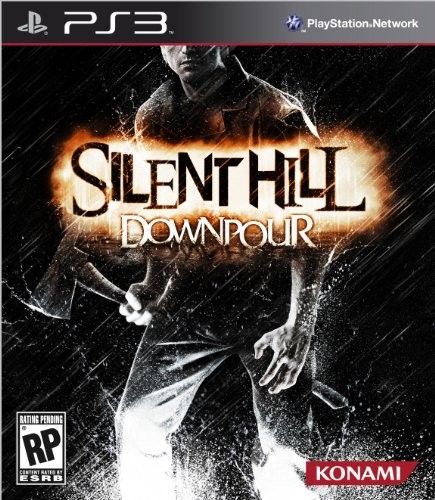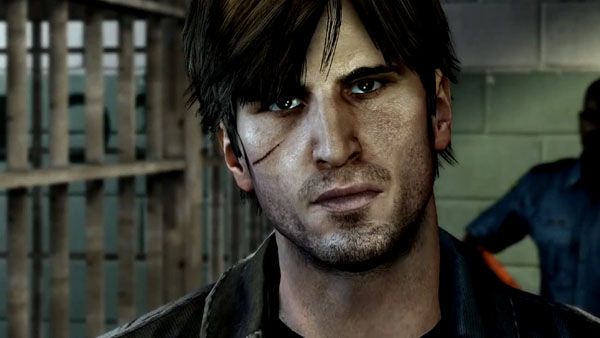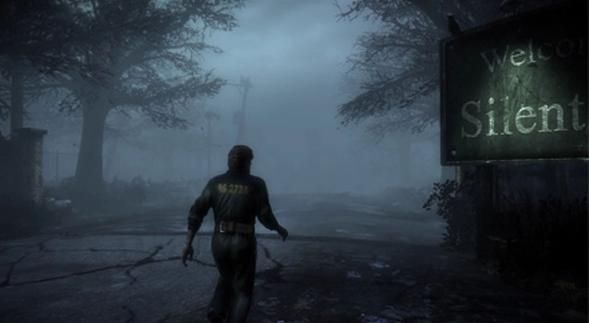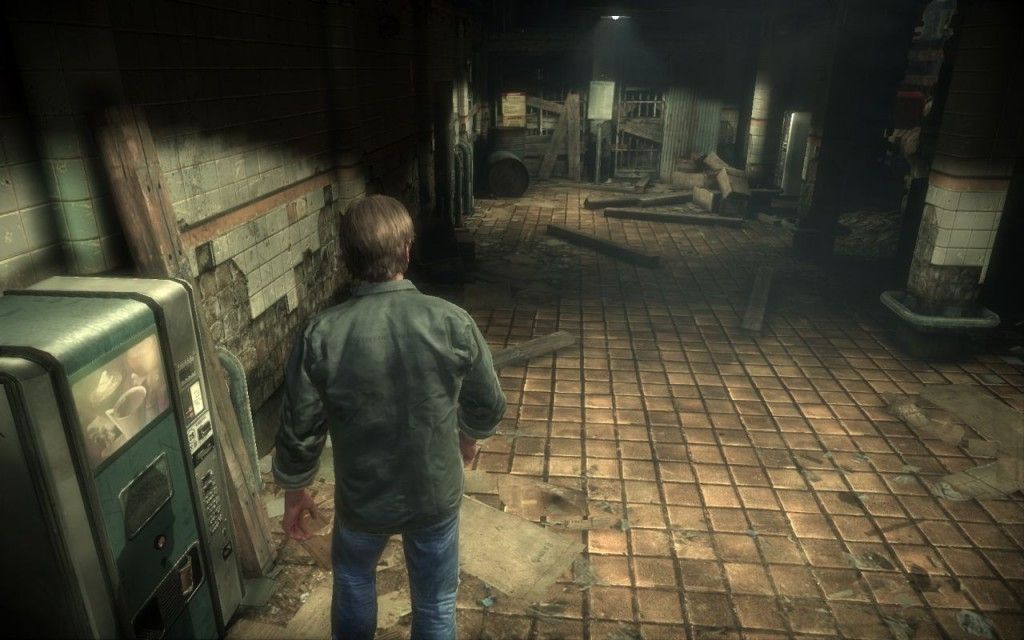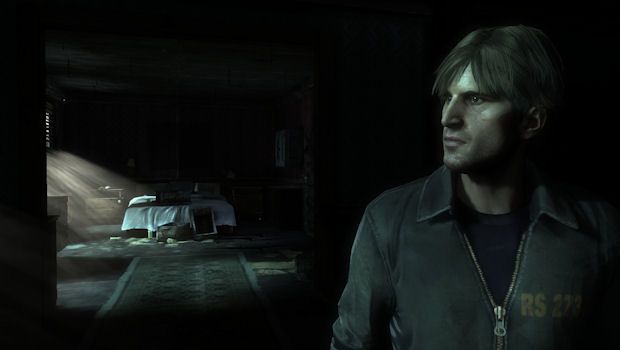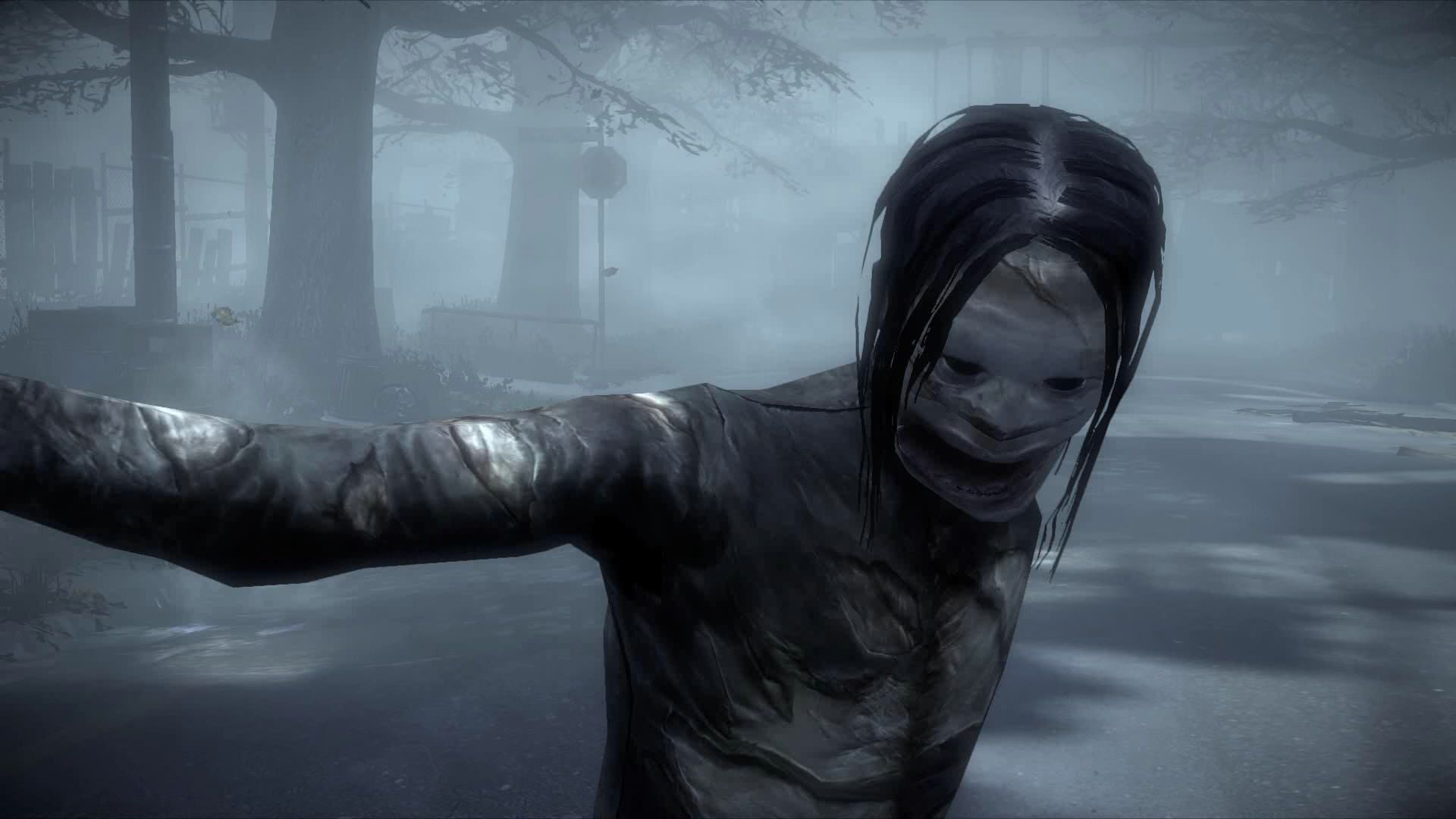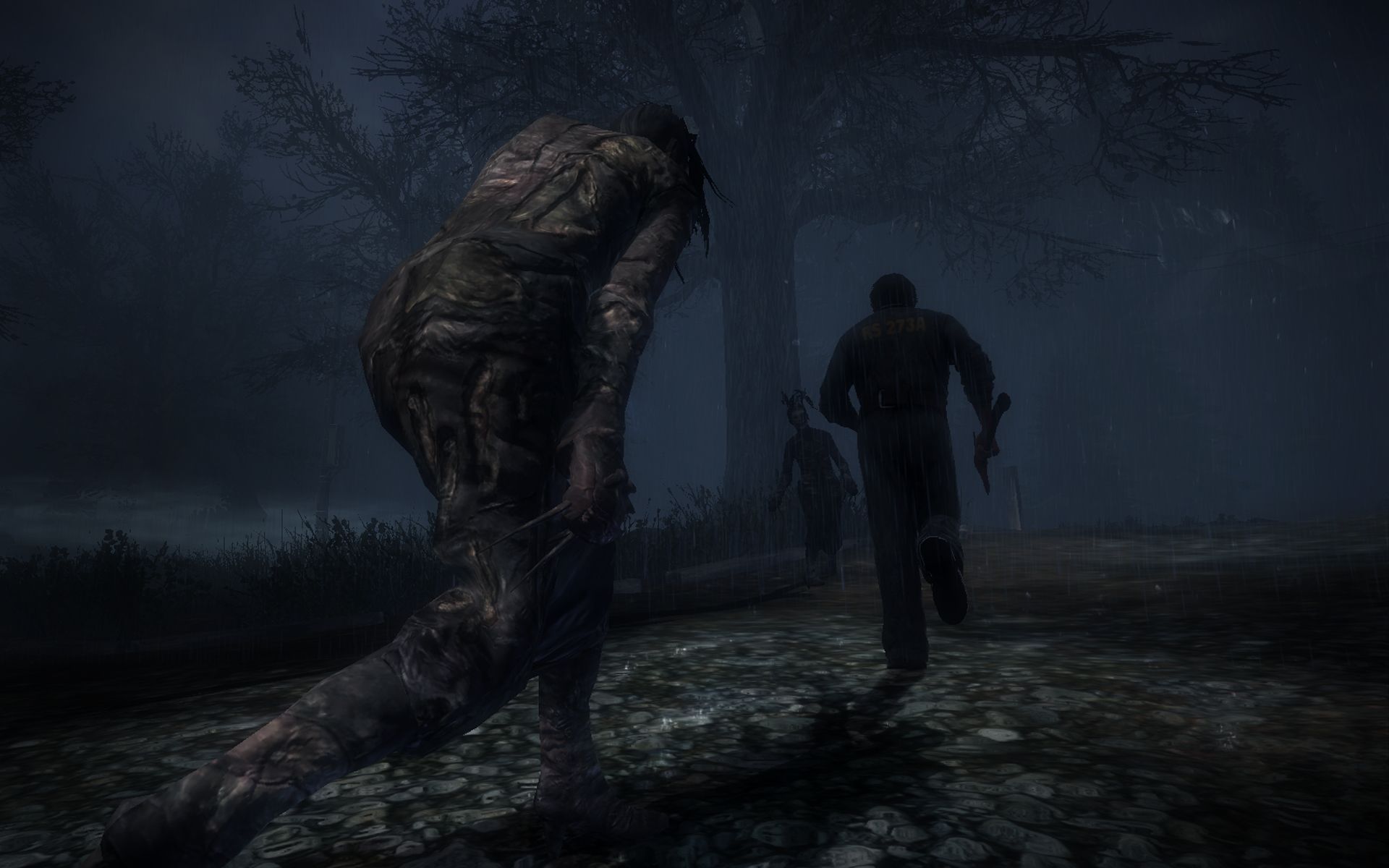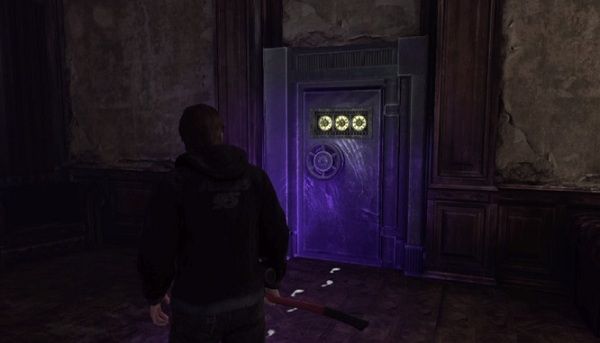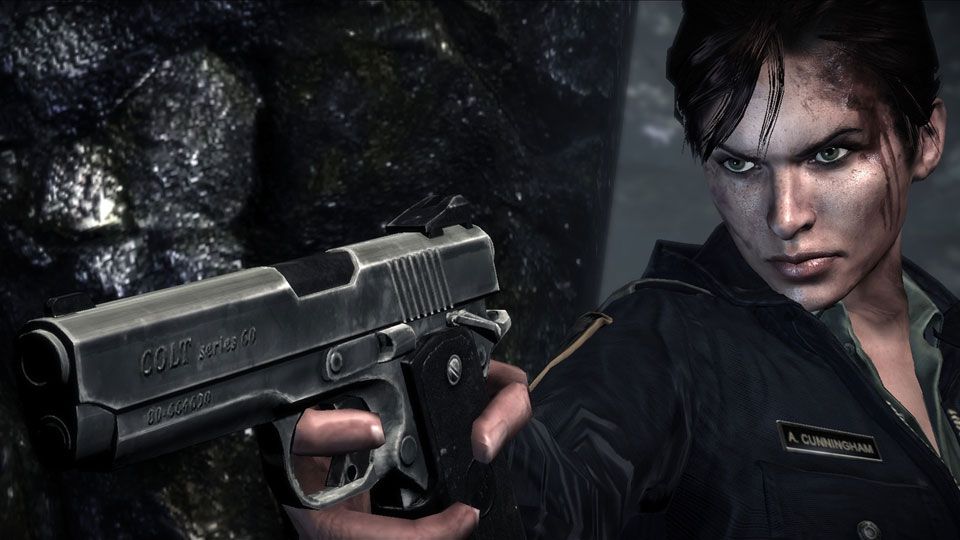Having not played a Silent Hill title since The Room, which I found incredibly disappointing, I wasn’t quite sure what to expect from Silent Hill: Downpour. I was pleased to find that the series had returned to its roots – though not surprised by too much else in the game. I’ll resist the urge to explain that right away, as doing so might give you inaccurate impressions on the overall experience.
The story follows a convict named Murphy Pendleton, though it takes a few hours to find out just why he was convicted in the first place. There are certain implications of a violent nature in Murphy, both from the noticeable scars on his face and his quiet, understatedly intimidating demeanor, but don’t get the wrong impression; much like a Transformer, there is more to Murphy than meets the eye.
The opening scene, which functions as your tutorial mission, starts with a guard named Sewell freeing you from your cell, as per an agreement they made before the story begins. You don’t hear precisely what it was right away, but between Sewell’s smug, dangerous attitude and Murphy’s determined yet withdrawn manner, it’s clear that something ugly is about to go down.
You hit the showers, the guard tells you to turn all of them on because the steam fogs the camera lenses (foreshadowing for both Silent Hill’s trademark fog and Downpour’s rain mechanic), and find a knife sitting on a bench. A fat, piggish looking pedophile enters through another door, looks extremely nervous to see Murphy there, and… let’s just say you get your combat tutorial.
This brief encounter, which is based on several real-life instances of institutional corruption in state correctional facilities, forms the moral/ethical backbone of the story. When you eventually end up in the town of Silent Hill, many puzzles and story elements will touch on the incident, and how it relates to Murphy’s past.
While the graphic, uncomfortable opening scene was certainly provocative, the real fun starts when you set foot on the foggy streets of Silent Hill. The graphics won’t blow you away, but they do a fine job of capturing both the town itself and the fear it inspires in Murphy.
A lot of the best parts are in the smallest details; an overturned shopping cart in an alley speaks of abandonment. A murder of crows sitting on a telephone wire, barely visible in the obscuring fog, suggest that the town is watching you -- which, of course, it is.
Always.
When the town and its terrible denizens start taking a more active role in torturing Murphy’s troubled mind, you see his shoulders tense, his head start peeking around compulsively, his eyes darting back and forth. Murphy is terrified of the place, and that emotion seeps through to the player. To top it all off, if you spend too long outside it will begin to rain, which not only limits your field of vision but also agitates any monsters who happen to be lurking about. When the rain comes, it’s best to seek shelter.
These kinds of details make exploration the most frightening aspect of the game. Silent Hill games have always capitalized on suspense rather than cheap ‘ohmygodsomethingisjumpingoutofthecloset!!!!’ thrills, and Downpour is no exception. Many of the game’s areas force you to rely on the narrow beam of your flashlight as your sole means of navigation, and when you can only see a third of the screen your mind turns every tiny little sound you hear into your worst nightmare.
You’ll find yourself spinning in circles looking for whatever is tapping against a wall or dragging its feet across the ground, and often the times when you find nothing are more terrifying simply because your own imagination knows what scares you more than any game designer possibly could – which is, of course, what they capitalize upon.
Speaking of sound for a moment, the sound design in Silent Hill: Downpour is worthy of note. The horror genre, more than any other, relies on good sound work to create proper immersion. Daniel Licht, stepping in for longtime Silent Hill composer Akira Yamaoka, does a fantastic job in sculpting the game’s music into just the right shapes for any given situation.
When Murphy enters a new area the music is typically very quiet, with ambient sounds and light percussion, which subtly gives the sense that Murphy is keeping his ears open for trouble in an unfamiliar place. When you hear a door slam in an adjacent room or a machine start up on its own, the sound seems deafening in the confines of that relative silence.
New discoveries or enemy encounters in an area add instrumental layers to the place’s theme, which shows how the town is working on Murphy’s mind – each new horror gets his heart pumping a little faster. During the game’s most climactic moments, industrial overtones and hammering percussion create the sound of sheer panic, punctuated by Murphy’s screams.
Players who lament the loss of Yamaoka will appreciate that a good selection of music from earlier SH titles can be played through radios that Murphy will find scattered throughout buildings around town – though leaving a stereo playing while you explore an unfamiliar place will put you at risk of not hearing an enemy’s approach early on. You’ll want to watch your back carefully in such situations.
To this end, the developers added a feature where pressing one of the shoulder buttons allows you to quickly look over Murphy’s shoulder. It’s a fairly small detail, but it adds tremendously to a player’s sense of paranoia and claustrophobia; I found myself constantly watching looking behind me as I traversed the eerie hellscape of the abandoned town.
Another similar detail is the ability to slowly open a door, allowing you to peek through first and see if something is lurking on the other side. This was somewhat disappointing by the end, as there were only a handful of occasions when it actually came in handy, but I still peeked first pretty much every time.
To be fair though, half of the reason for my caution wasn’t even that I was too worried about being spooked, as that’s kind of what I’m going for while playing the game in the first place. Most of the enemies aren’t even especially scary, compared to some of the mind-bending abominations in previous Silent Hill entries.
Don’t get me wrong – you’d hate to see any of these critters wandering the streets of your real life hometown, but they’re hard pressed to live up to Pyramid Head and some of the other classics. The primary reason you want to be as careful as possible is that enemies in this game are a tremendous pain in the ass.
Silent Hill games have never been known for their tight combat systems, but in a way that’s to their benefit. The characters in this series aren’t meant to be great fighters. The horror comes from seeing something terrible coming your way and knowing you’re just an average guy armed with a wrench, or maybe a board with some nails in it. I don’t mind that and actually sort of like it. The problem is, even (or perhaps especially) with a simplistic combat system, you want it to at least respond to the player’s actual commands. Silent Hill: Downpour doesn’t always grant you that.
The basic combat system in the game revolves around finding weapons, often improvised, around the town. It is fairly realistic in that you won’t be finding guns in trashcans or anything – you spend most of the game armed with rakes, shovels, maybe a fire axe or sledgehammer if you’re lucky, or a brick or glass bottle if you’re not. All of these will eventually break through use, so it can be a good idea to drop them every other time you find something new, as it truly sucks when you block an enemy’s attack only to have you weapon shatter and leave you unarmed.
While this core mechanic can be difficult to work with, it isn’t the problem. From a design standpoint it is perfectly sound; it’s survival horror, after all, so implementing a combat system which encourages survivalist instincts like hoarding new weapons or running like hell when you see more than a single enemy approaching works pretty well. What doesn’t work are the clunky targeting mechanics and apparently random enemy hit point levels.
When I first found a gun in this game, I felt like a god. With those seven bullets, I held seven monster’s lives in my hand. That feeling faded the third time I fired behind me – actually fired behind me – simply because I wasn’t facing a monster absolutely dead-on. We’re talking twenty degrees or less here. I don’t mind missing once in a while, but when manual aim is essentially a guaranteed death warrant at close range, I think it’s fair to expect that Murphy should have a little bit more success with auto-aim shooting from the hip.
For most of the game, the wonky combat system didn’t bother me too badly – I rationalized it to myself that Murphy wasn’t supposed to be a good fighter, and I was playing hard mode anyway, and you can usually run away if it comes down to it. By the end, though, even these justifications couldn’t cover the inherent mechanical flaws. There were times when you simply needed something to work better, and it didn’t. By the final boss I had saved up something like twenty shotgun shells – two or three of which will put down most foes – and I was still dying half the time simply because of the loose aiming and blocking systems.
The final defining feature of Silent Hill games is their puzzles, and in this respect Downpour kept up its part of the bargain. Some certainly require a little more thought than others -- a few are simple logic or pictograph puzzles, while others will give you a scrap of poetry as a clue to the order of colored lights on a switchboard, for example. A few puzzles make use of an ultraviolet forensic flashlight, which is a cool new detail.
There are a few fetch and return sidequest/puzzles which aren’t quite as impressive, but the best of them manage to blend a bit of that tasty Silent Hill terror into their solutions. My favorite involved putting on a stage production of Hansel and Gretel in an abandoned orphanage. As you work the lights and roll the fake rain machine, the line between reality and artifice, already dangerously thin, fades to transparency.
All in all, I thoroughly enjoyed this game. Though the combat ran from generally lame to outright infuriating, it didn't ruin the rest of the experience for me. The story was engaging, and if the voice acting wasn’t exactly top notch (you might be shocked to read that neither Steve Blum nor Nolan North made an appearance), parts of it were very good.
The story is a morality tale at its core, and five of the six endings reflect your decisions as a player. While there is little in the way of the branching-out versatility to the overall story as is popular in western RPGs these days, the endings all work well in accordance to a player’s decisions. It’s also fairly short (my first playthrough clocked in at about ten hours), so its not a big job to play through again to try out different endings and difficulty settings.
Honestly, the biggest shortcoming of this game didn’t really hit me until about an hour from the ending. While I enjoyed playing it for the most part, something felt like it was missing the whole way through. I couldn’t put my finger on it for a long time because most of the things they did in the game really worked; it was fun, it was fairly challenging, and my imagination is overactive enough that the horror elements really worked for me. In the end, I realized that the big problem isn’t with the things they did, but with the things they didn’t do.
Downpour felt exactly like the old Silent Hill games, which, if you loved them the way I did, goes a long way toward disguising the fact that they didn’t make any significant strides forward in terms of technology. Apart from better graphics, they didn’t do anything they couldn’t have done in Silent Hill 2.
I normally don’t come down on a game for this kind of thing, but honestly the lack of ambition in such an established franchise is too big a problem to be ignored. I said in the beginning of this review that I was glad to see that the series had returned to its roots, in favor of the underwhelming and repetitive settings of Silent Hill 4: The Room – but it’s also why so little about this game seemed genuinely fresh and exciting.
There is a balance to be struck between upholding the spirit of a series and bringing something new to the table, and Konami definitely leaned hard toward the former at the latter’s expense. The nostalgia factor is high, but players who are new to the series might have a hard time jumping in at this point.
Silent Hill: Downpour
- Franchise
- Silent Hill
- Platform(s)
- PS3 , Xbox 360
- Released
- March 13, 2012
- Developer(s)
- Vatra Games
- Publisher(s)
- Konami
- Genre(s)
- Survival Horror , Action-Adventure , Fighting
- Engine
- Unreal Engine 3
- ESRB
- m
- How Long To Beat
- 9 hours

